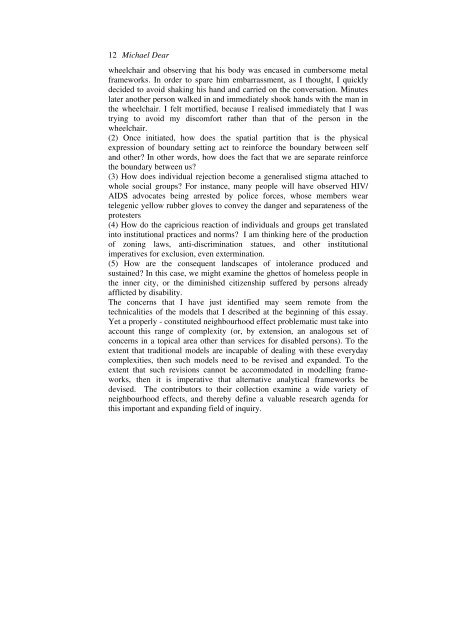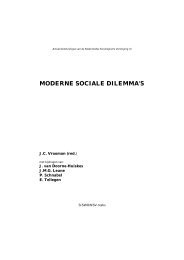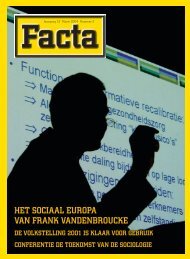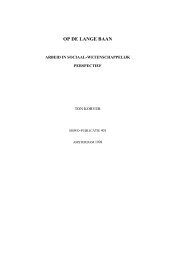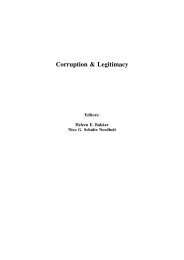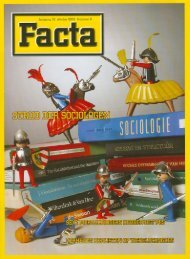de invloed van de buurt - Maatschappijwetenschappen - Universiteit ...
de invloed van de buurt - Maatschappijwetenschappen - Universiteit ...
de invloed van de buurt - Maatschappijwetenschappen - Universiteit ...
You also want an ePaper? Increase the reach of your titles
YUMPU automatically turns print PDFs into web optimized ePapers that Google loves.
12<br />
Michael Dear<br />
wheelchair and observing that his body was encased in cumbersome metal<br />
frameworks. In or<strong>de</strong>r to spare him embarrassment, as I thought, I quickly<br />
<strong>de</strong>ci<strong>de</strong>d to avoid shaking his hand and carried on the conversation. Minutes<br />
later another person walked in and immediately shook hands with the man in<br />
the wheelchair. I felt mortified, because I realised immediately that I was<br />
trying to avoid my discomfort rather than that of the person in the<br />
wheelchair.<br />
(2) Once initiated, how does the spatial partition that is the physical<br />
expression of boundary setting act to reinforce the boundary between self<br />
and other? In other words, how does the fact that we are separate reinforce<br />
the boundary between us?<br />
(3) How does individual rejection become a generalised stigma attached to<br />
whole social groups? For instance, many people will have observed HIV/<br />
AIDS advocates being arrested by police forces, whose members wear<br />
telegenic yellow rubber gloves to convey the danger and separateness of the<br />
protesters<br />
(4) How do the capricious reaction of individuals and groups get translated<br />
into institutional practices and norms? I am thinking here of the production<br />
of zoning laws, anti-discrimination statues, and other institutional<br />
imperatives for exclusion, even extermination.<br />
(5) How are the consequent landscapes of intolerance produced and<br />
sustained? In this case, we might examine the ghettos of homeless people in<br />
the inner city, or the diminished citizenship suffered by persons already<br />
afflicted by disability.<br />
The concerns that I have just i<strong>de</strong>ntified may seem remote from the<br />
technicalities of the mo<strong>de</strong>ls that I <strong>de</strong>scribed at the beginning of this essay.<br />
Yet a properly - constituted neighbourhood effect problematic must take into<br />
account this range of complexity (or, by extension, an analogous set of<br />
concerns in a topical area other than services for disabled persons). To the<br />
extent that traditional mo<strong>de</strong>ls are incapable of <strong>de</strong>aling with these everyday<br />
complexities, then such mo<strong>de</strong>ls need to be revised and expan<strong>de</strong>d. To the<br />
extent that such revisions cannot be accommodated in mo<strong>de</strong>lling frameworks,<br />
then it is imperative that alternative analytical frameworks be<br />
<strong>de</strong>vised. The contributors to their collection examine a wi<strong>de</strong> variety of<br />
neighbourhood effects, and thereby <strong>de</strong>fine a valuable research agenda for<br />
this important and expanding field of inquiry.


